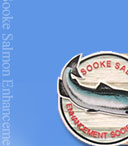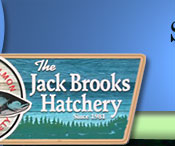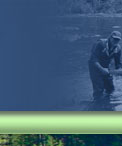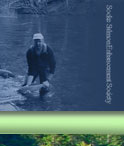North American Sockeye Salmon originate in freshwater habitats, from the Columbia River in the south to the Bering Sea Coast. 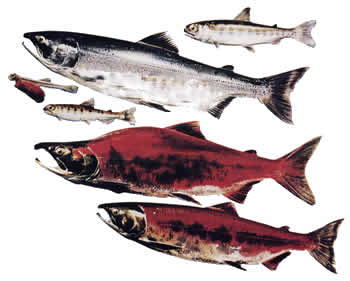 The main spawning area extends from the Fraser River, to the rivers draining into Bristol Bay, Alaska. The main spawning area extends from the Fraser River, to the rivers draining into Bristol Bay, Alaska.
Most Sockeye in British Columbia spawn in the late summer or fall, they return to spawning grounds as three - four - or five year old fish after one to three or four winters at sea.
Little is known of the early ocean travels of the Sockeye. Their maturing years find them feeding in a huge area off the Pacific extending westward to the Aleutian Islands, and then northward into the northern Gulf of Alaska. Sea run sockeye have dark blue backs with few spots and bright silver sides. When they enter fresh water after a typical two years at sea, both males and females develop bright red bodies and green heads. The males' bodies become laterally compressed, a hump grows behind the head, the jaws become hooked, and sharp canine teeth appear.
Sockeye fry, after emerging from the gravel, migrate to freshwater lakes, where they spend 1 to 2 years before heading out to sea. Some populations, called kokanee, spend their entire lives in freshwater lakes.
SOCKEYE SALMON MIGRATION ROUTE:
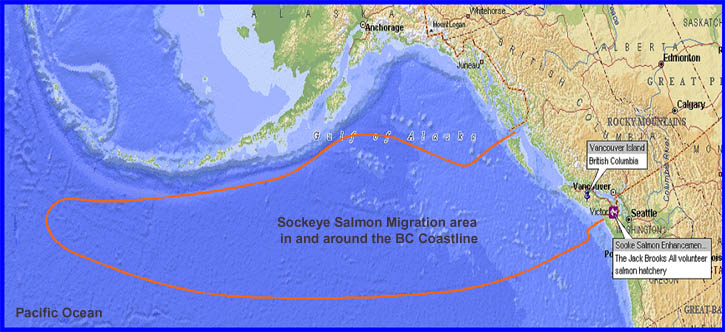
As seen from the map Sockeyes' migratory route is very extensive, the young Sockeye seem to move northwestward along the coast to eventually mature, and feed in the open Ocean.
|
